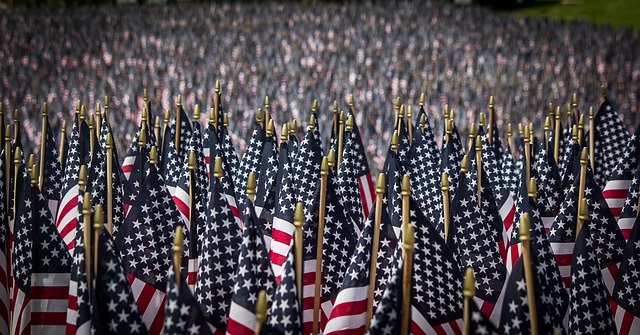Due to scheduling, I’m a bit late with this post in your eyes, but, I wrote it within a few weeks of hearing the propaganda air on NPR. Honestly, I was driving when this came on the radio and I nearly wrecked. I really hate it when people calling themselves journalists go into a coffee shop, where you generally find the lowest I.Q. in the county and a television tuned to Fox News because, that’s their base, the lowest I.Q. in the county. People claiming to be journalists will go here when pitching an agenda instead of doing actual investigative reporting.
Today’s tariffs are nothing like Jimmy Carter’s disastrous grain embargo of Russia. Yes, prices are a bit down. They were going t be down anyway, we have carryover. Yes, a token few farmers who were leveraged to the hilt will go under. We can hope sanity will return to cash rent and land prices because they have been artificially high since the government made a push with ethanol and every moose with ears decided to speculate in agricultural land prices.
An embargo is when you refuse to sell/purchase from someone. A tariff is when one country taxes their people if they purchase from you. It doesn’t actually stop someone from buying your products, just makes them more expensive. Yes, for a time, this means some will purchase from other locations, but this logic also suffers from “Grade 8 Bolt Syndrome.” That syndrome is believing that all products with the same name are the same. They are not.
Soybeans are different based on variety planted, growing conditions and the soil type where they were grown. Steel products differ based on quality or ore, smelting process and recipe. Just because a bolt passed some lab test to achieve a rating doesn’t mean it is the same as a bolt from another country which passed the same test. Those tests measure only a few traits. Likewise soybeans differ in oil and protein content. This difference is field to field and country to country. When using them for either human or animal consumption, one must take these differences into account.

 Bulk shipping of any kind leads to one problem few speak about. Insect migration. When you choose to buy from a country you’ve never bought from before, you have to prepare your supply line to kill off any unwanted passengers like that Brazilian Wandering Spider. It has the most neurologically active venom of all spiders and is regarded as the most dangerous spider in the world.
Bulk shipping of any kind leads to one problem few speak about. Insect migration. When you choose to buy from a country you’ve never bought from before, you have to prepare your supply line to kill off any unwanted passengers like that Brazilian Wandering Spider. It has the most neurologically active venom of all spiders and is regarded as the most dangerous spider in the world.
Why is this an issue? Because eventually all insects learn to adapt to a new environment. How would you like to find one of these wandering around your basement or flower garden? I have a friend working at a soybean processing company in America which is actually owned by a Brazilian entity. During a slow supply time of U.S. raised soybeans they opted to purchase soybeans from Brazil. It came with these and a bunch of other bugs. Far more living insects than would ever be allowed out of an American port. They had to shut down and fumigate their tunnels after crushing those beans. Odd since they bought the beans to avoid shutting down. A mistake management claims they will never repeat.
If you put a high enough tariff on something, it will inspire people to find a way around it. Brazil has an infrastructure problem. No matter how large their soybean crop is they cannot get it to a port if it is more than a few miles from said port. Bridges and rail lines may not be sexy, but they allow business to operate. China may just have tipped the balance. We are already seeing Brazil buying U.S. soybeans. What we don’t know is if they are just transferring those containers to a ship bound for China or if they are selling all of their soybeans at a higher price and buying ours for internal consumption. To the farmer, it doesn’t really matter, it’s a market willing to buy soybeans at market price.
Eventually the Brazilian total cost of delivery will exceed total cost of delivery + tariff of buying from the U.S. This happens. It also goes the other way when we have a short crop. Our prices go up and external customers go to cheaper markets. That’s why these things are called commodities.
Another difference between then and now is the aid package for impacted farmers. Carter didn’t offer it. Farmers lost money, got into debt and it triggered a Ag credit crisis which lasted for a very long time. The credit crisis took down International Harvester, caused Detroit to layoff due to non-existent truck sales, John Deere and every other Ag based manufacturer also had to slow or halt production because farmers couldn’t afford to buy the products. The resulting layoffs cost thousands of jobs further torpedoing the economy.
Will the aid package remove all pain from farmers? No way in Hell! Will it soften the blow to the overall economy? Probably. We already know most ports have expanded into container handling. While there will still be river ports which have bulk grain handling equipment to unload barges, they won’t be left high and dry if the barges stop flowing, which won’t happen. China is not the only place we sell. The Brazil price has gone up so some of Brazil’s customers will be switching to U.S. soybeans once the total purchase and delivery cost drops “enough” below the same cost from Brazil. It may have already happened by the time this post goes live.
The current trade war involving Ag products with China is in no way comparable to the Carter era embargo or Russia. That was based on the 14th century siege mentality where you surround a castle and starve out the occupants. Not possible in a world with global suppliers. China is taxing its own people who will still buy some U.S. soybeans because the math works for them. Brazil’s customers pushed out due to China dramatically inflating the cost of Brazilian soybeans may well not go back for a long time.
But don’t they shop for the lowest price, you ask? Some do. Others also consider the unseen cost. You saw that spider picture right? When they get used to processing much cleaner grain which doesn’t require so much prep and extermination work, they just might be willing to pay a premium. Some of these countries and companies may never have purchased from America. The United Soybean Board is also working to expand U.S. access to India and other countries. Admittedly India currently has much the same problem as Brazil, no infrastructure. They do seem to be in a better position to fix their problem though.



A remarkable and well thought out opinion. Thanks.